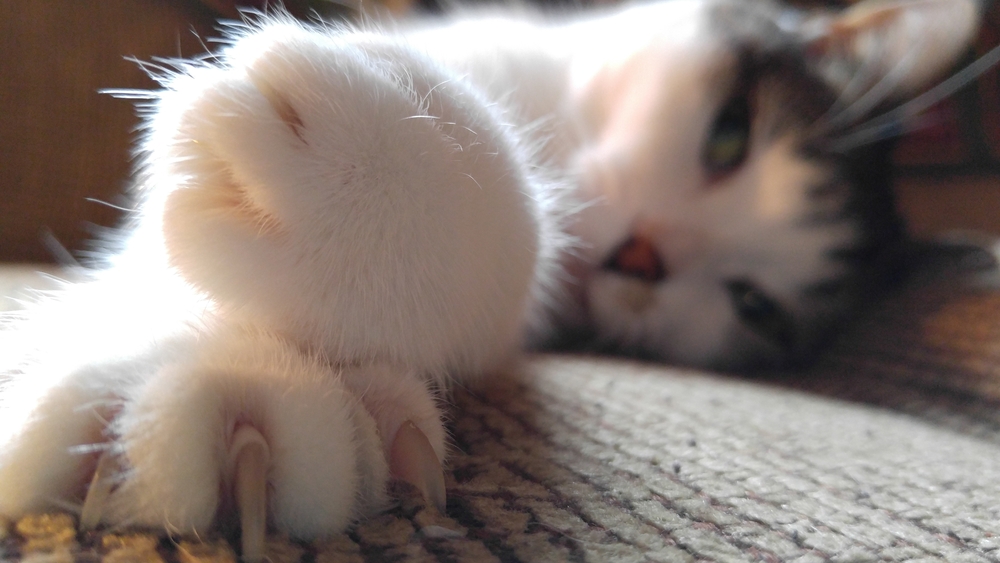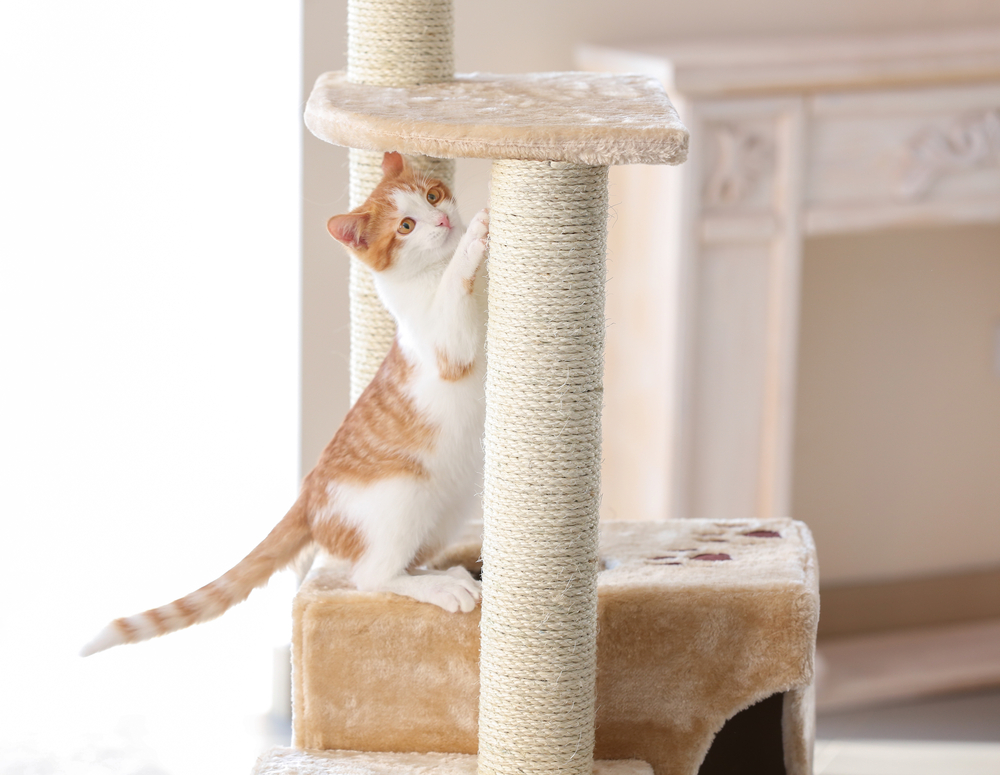
Scratching is a natural and healthy cat behavior, but this doesn’t make your scratched furniture, door frames, or curtains easier to accept. Cat owners commonly complain about their cat’s inappropriate scratching which, unfortunately, is a frequent reason cats are surrendered to shelters.
Inappropriate scratching is often motivated by stress, anxiety, lack of resources, or training. If your cat’s scratching up the wrong tree, you don’t have to resort to declaw surgery—let Livermore Family Pet Hospital help with these safe and effective alternatives.
What’s wrong with declawing my cat?
Historically, the declaw surgery—formally called an onychectomy—has been performed to prevent or stop undesirable scratching behavior. While the declaw sounds innocent enough, the surgery is more than a toenail removal—it’s an amputation. And, performed incorrectly, the procedure can leave cats with permanent damage. Declaws are highly controversial, and many consider them inhumane. The procedure is outlawed in eight California cities.
Because the cat’s nail is retractable, removal requires amputation of the toe at the first knuckle (i.e., third phalanx or P3). If any tissue is left behind or too much tissue or bone is removed (i.e., dissection into P2), cats can suffer from post-operative infection, inflammation, chronic pain, and nerve damage. Debilitated cats may demonstrate behavior changes, including fear, aggression, or inappropriate urination.
Why do cats need to scratch?
Scratching is a purposeful behavior that satisfies several feline needs, including:
- Territory marking — Your cat may be saying “This is mine.” Cat paws have scent glands that leave messages when they scratch. Discarded nail coverings send a bigger statement of confidence and assurity.
- Self-expression — Your cat may scratch out of excitement, stress, or anxiety.
- Nail health — Scratching helps dislodge and remove old nail coverings and sharpens nails for effective climbing and grasping.
- Stretching — Purr-lates, perhaps? Cats stretch often, to elongate their spine and prime their bodies for leaping and climbing.
How can I redirect my cat’s destructive scratching?
Declawing is an unnecessarily severe surgical procedure for a behavior problem that can be successfully managed with a few changes in your cat care routine. To provide the highest standard of feline care, Livermore Family Pet Hospital is aligned with the Feline Veterinary Medical Association and the American Animal Hospital Association (AAHA) in opposing the declaw procedure. Our veterinarians advise owners to explore safe and humane alternatives, including:
- Performing regular nail care — Keeping your cat’s nails short will discourage their scratching frequency and intensity, making them less likely to damage your furniture, belongings, or skin. If you’re new to cat nail trimming, we are happy to provide a demonstration. We recommend trimming one or two nails at a time to prevent cat stress, and using small cat-specific nail trimmers for better control.
- Covering claws with nail caps — Soften your cat’s sharp, pointy claws with plastic nail covers. While these caps aren’t suitable for wiggly or paw-sensitive cats, they may fit like Cinderella’s slipper on well-behaved felines. Nail caps are easily applied with a small drop of adhesive, and then placed over the nail. The cat will shed the cap as the nail grows, or you can trim the nail to remove the cap. Caps are ideal for households with children or elderly adults with sensitive or easily broken skin.
- Sending calm messages with pheromones — If your cat’s scratching is motivated by stress or anxiety, feline pheromones such as Feliway may help. Pheromones are odorless chemical messages that replicate natural feline communication, promoting a sense of calm and relaxation. Feliway diffusers are an odorless and convenient way to infuse an entire room (i.e., the one where your cat is scratching) with happy vibes, while Feliway spray can be applied directly to the areas you want your cat to stop scratching.
- Designated scratching areas — Have you given your cat an appropriate place for their natural scratching instincts? If not, the answer to your problems could be one scratching post away.

Provide your cat with safe scratching areas by installing scratching posts, mats, or ramps near their food and water, litter box, and favorite resting place. When shopping for an appropriate scratching apparatus, consider the following:
-
- Height — Most cats look for vertical surfaces that can provide a full body stretch, so consider your cat’s size when determining the height of your post. Senior cats with arthritis may prefer a scratching mat, box, or ramp.
- Stability — Your cat needs a post that can hold up to their digging, stretching, and pulling. Ensure the post has a solid weighted base.
- Texture — Cats usually enjoy sisal rope scratching products, but explore various textures, including cardboard or carpet, to ensure your choice suits your cat’s preferences.
- Availability — Provide each household cat with a scratching post, plus extra, to prevent competition-related stress or territorial behavior.
- Attract them with Feliscratch — Feliscratch uses synthetic territory messages to send your cat a clear “Scratch here” signal. In as little as one month, your cat can be retrained to a new object or area—best of all, they’ll think it was their idea!
- Enrich their environment — If your cat is scratching out of boredom or loneliness, they need more social interaction, or new ways to exercise and explore. Try food puzzles, motion-activated toys, or one-on-one time to channel your cat’s energy into something positive, and improve their satisfaction and sense of security.
A cat’s strong natural drive to scratch and claw is mental—not physical. Simply removing a cat’s appendages may stop the exterior damage, but will not end the cat’s desire to scratch—and may result in lifelong health and behavior issues. Don’t risk your cat’s comfort and wellbeing for a “quick fix”—always try the least-invasive methods first. When in doubt, contact Livermore Family Pet Hospital for assistance.

